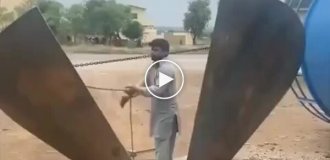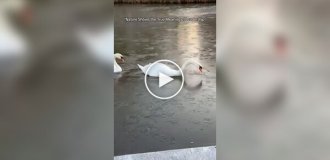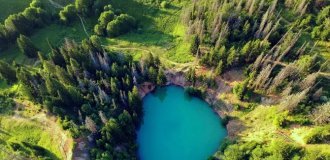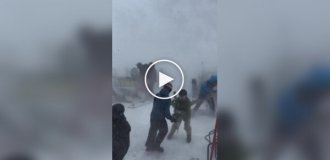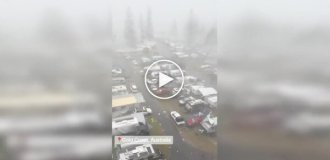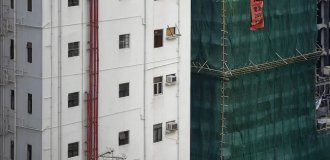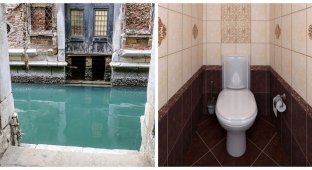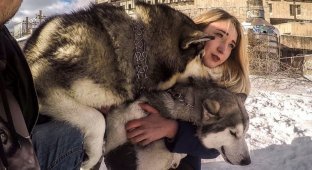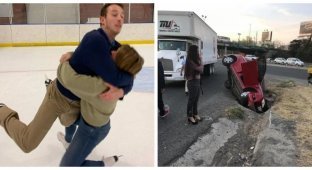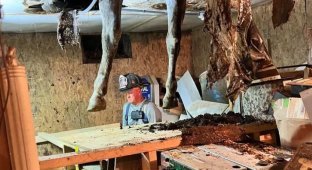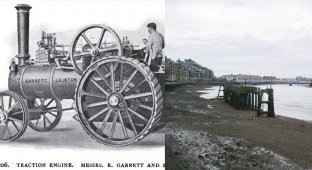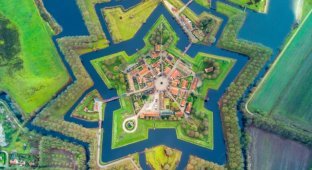Everest cleaners clear the mountain of the bodies of dead climbers (6 photos + 2 videos)
The melting of ice and snow on Everest, caused by climate change, has begun to expose hundreds of bodies of people who died while conquering the dangerous peak. The problem is especially acute in the so-called “death zone” at an altitude of more than 8,000 meters. A team of professionals, risking their own lives, is lowering the bodies down. 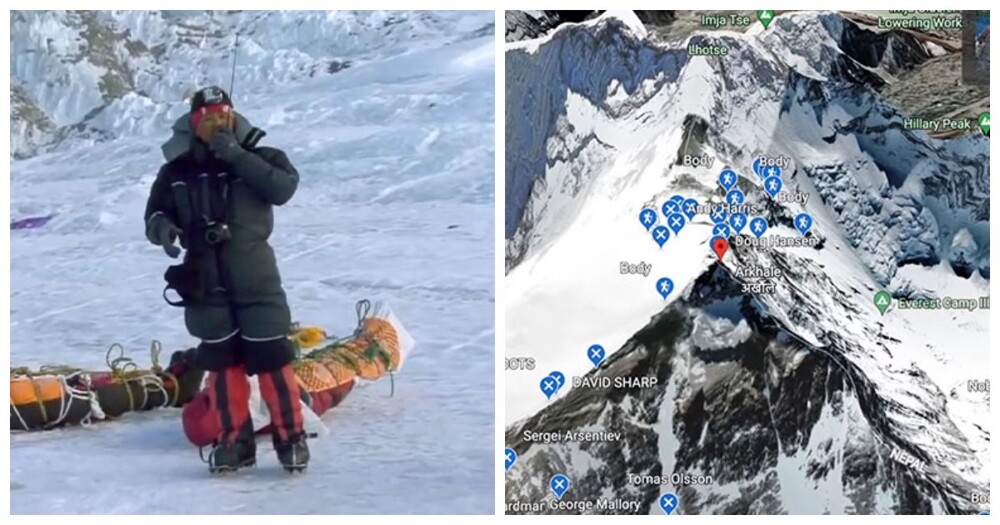
Five unnamed (for now) frozen bodies have been recovered, including one skeletal remains, as part of a mountain cleanup campaign in Nepal on Everest and the adjacent peaks of Lhotse and Nuptse, CBS News reported Thursday (June 27).
Rescuers spent hours chipping away at the ice with axes and sometimes used boiling water to free the frozen handle, according to a CBS News report.
Aditya Karki, a Nepalese army major who led a team of 12 soldiers and 18 climbers, told a US broadcaster: "Due to the effects of global warming, bodies and debris are becoming more visible as the snow cover thins." 
Since expeditions to Everest began in the 1920s, more than 310 people have died attempting to reach the summit, Big Think reports.
The death toll rose as more climbers attempted the summit, but the death rate has dropped thanks to improved safety measures and better equipment, MountEverest.info reported.
Causes of death on Everest vary, but the most common are acute mountain sickness, falls, avalanches, hypothermia and exhaustion.
The high-altitude "death zone" above 8,000 meters is especially dangerous due to the lack of oxygen, which greatly reduces climbers' ability to make sound decisions and increases the likelihood of fatal mistakes, explains Big Think. 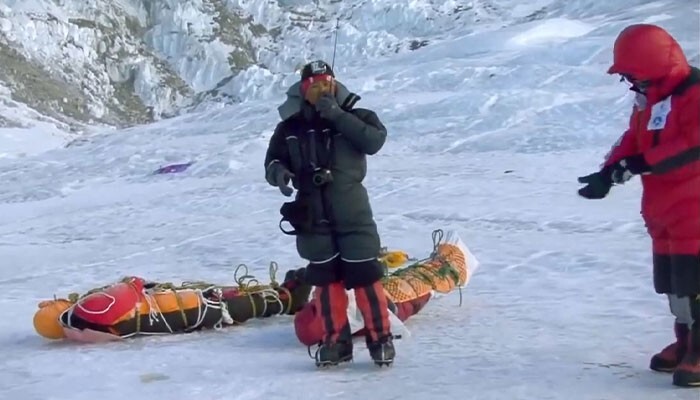
According to the latest data from EverestMountain.co.uk, nine people have died on the mountain this year.
Among the dead were the Mongolian couple Usukhjargal Tsedendamba and Purevsuren Lkhagvazhav, who were found high on Everest and died while descending from the summit. They reportedly made the climb without Sherpa support and without supplemental oxygen.
The word "Sherpa" (or "Sherpa") is commonly used to refer to a person who is a mountain guide or porter working in the Everest region, the BBC reports. But in fact, Sherpas are the name of an ethnic group of people living in the mountains of Nepal, in Central Asia.
While descending from the summit, Daniel Paul Peterson and Pasang Tenji Sherpa were also caught in the sudden fall of the cornice and remain missing, EverestMountain.co.uk reported on June 1.
In addition, Kenyan climber Cheruiyot Kirui disappeared on May 22, and his body was soon found near the summit. Nawang Sherpa climbed with Cheruiyot but reportedly did not return to base camp.
37-year-old Nepalese climber Binod Babu Bastakoti died on May 22 at an altitude of about 8,200 meters.
Additionally, on May 27, Banshi Lal, an Indian citizen, died in a hospital in Kathmandu. Banshee was rescued from Everest and flown to Kathmandu on May 21 after showing signs of acute mountain sickness.
Finally, 48-year-old Romanian Gabriel Tabara was found dead in his tent in Camp 3 on May 21. According to reports, he attempted to climb Lhotse without using supplemental oxygen.
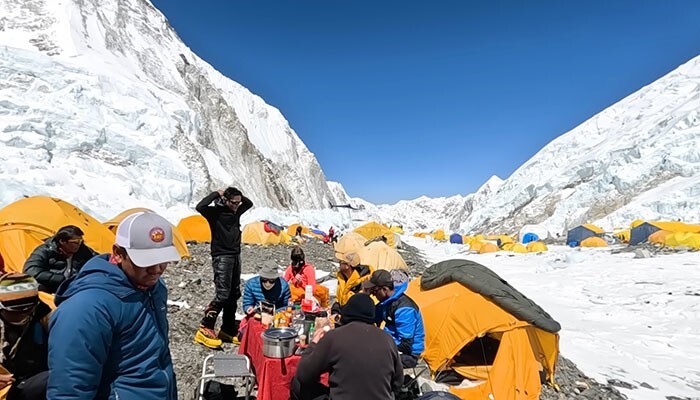
Many bodies remain in the Himalayas in the Mahalangur Himal foothills, some of them hidden by snow or lost in deep crevices. Others, still dressed in colorful climbing gear, serve as grim markers on the way to the summit.
Prominent examples include "Green Shoes", the body of an unknown climber on the main route of Everest's northeast ridge, and "Sleeping Beauty", identified as Francis Arsentieva, who died in 1998 during her descent.
Army Major Aditya told AFP: "People believe that by going up mountains they enter a divine space, but if they see dead bodies on the way up, it can have a negative effect."
It took climbers 11 hours to free one of the bodies, encased in ice up to the torso, reports CBS News.
Tshiring Jangbu Sherpa, who led the expedition to recover the body, admitted: “It is extremely difficult. Getting the body out is only part of the job; getting it down is a more serious task.”
According to Tshiering, some of the bodies still look almost the same as when they died.
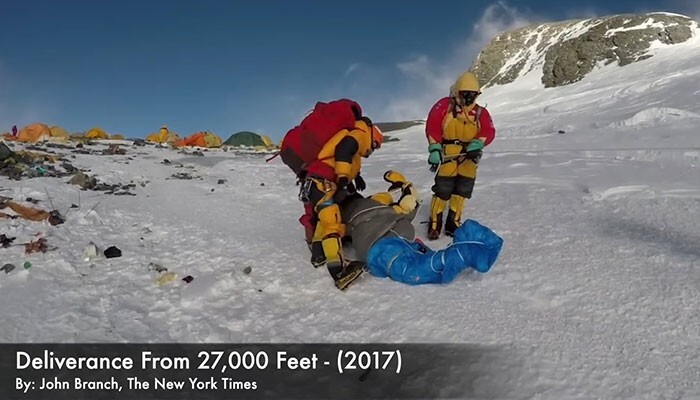
Retrieving corpses at high altitude is a controversial topic in the mountaineering community. It costs thousands of dollars and requires up to eight rescuers per body, CBS News reports.
The body can weigh more than 220 pounds (just under 100 kilograms), and at high altitudes a person's ability to bear weight is greatly affected.
However, Aditya explained: “We must return as many bodies as possible. If we continue to leave them, our mountains will turn into a cemetery.”
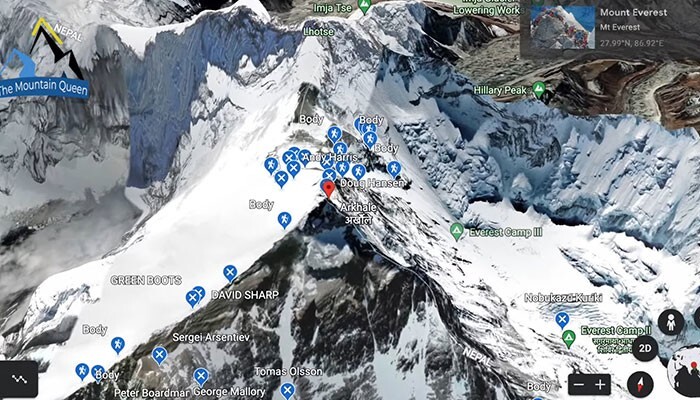
The bodies are reportedly often wrapped in a bag and then placed on plastic sleds to be dragged down.
Tshiring said bringing one body down from the 8,516-metre peak of Lhotse - the world's fourth-highest mountain - was one of the most difficult challenges so far, the news outlet reported.
“The body froze with arms and legs outstretched,” he recalls. “We had to carry him down to Camp Three like this before he could be put on the sleigh to carry him.”
Camp Three is a 30-degree snow slope with rock outcroppings on which the climbers' tents are pitched, explains 360 Expeditions. This camp is only for a short rest; it is dangerous to stay there for a long time.
Rakesh Gurung, a spokesman for Nepal's tourism department, said the two bodies had been provisionally identified and authorities were awaiting "detailed tests" for final confirmation. The bodies found are now in the capital Kathmandu. Those that have not been identified will likely be cremated, CBS News reports.
The cleanup campaign, which was budgeted at more than $600,000, also reportedly involved 171 Nepalese guides and porters removing about 12 tons of trash. Fluorescent tents, discarded climbing equipment, empty gas cylinders and even human excrement litter the beaten path to the summit, the broadcaster reported.
“The mountains have given us climbers so many opportunities,” Tshiering said. “I feel like we have to pay them back, we have to remove the trash and the bodies to clean up the mountains.”
